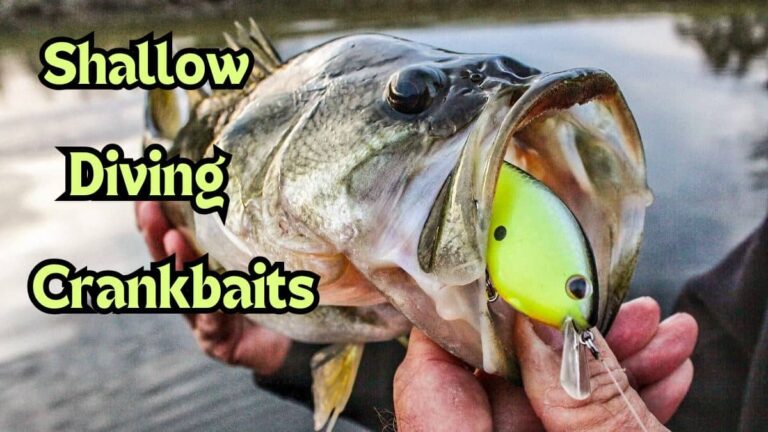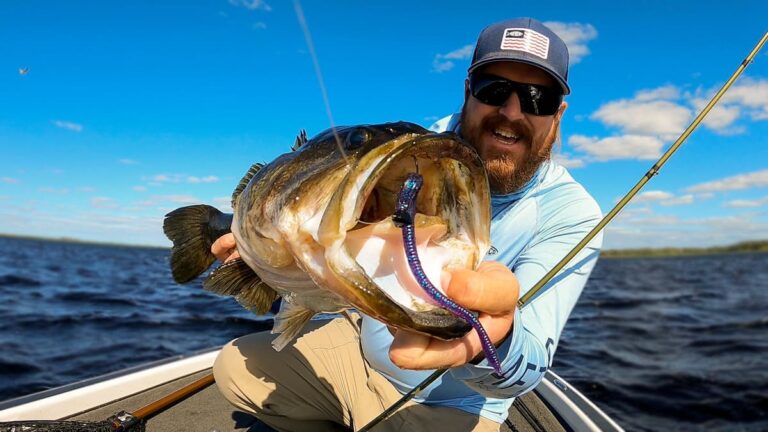Top 3 Ways to Rig Flukes on a Spinning Setup
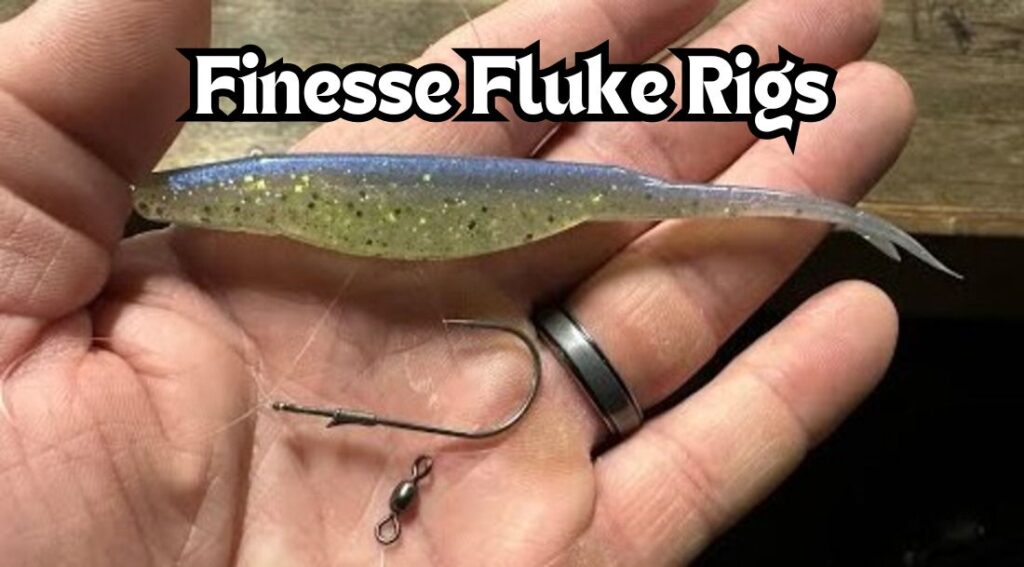
The fluke is one of the most popular soft plastic baits in the entire fishing industry.
And most of the time, you see guys using the flukes on heavy duty baitcasters with big, stout hooks.
But that is not necessary. Here are the top 3 ways to rig flukes on spinning gear.
Difference of Using Spinning Equipment
Most guys primarily fish flukes on a baitcasting setup. The reason for this is that the main way to rig a fluke is with an offset or EWG hook.
To get a high percentage hook set with those hooks, you need a heavier duty baitcasting rod and a bit heavier line.
Spinning equipment just doesn’t have enough strength and force to drive the hook out of the fluke’s body and into the bass’s mouth.
But if you prefer using spinning gear or want to fish your flukes with more finesse, you can certainly do that as well.
You just need to use a bit different rigging techniques.
Advantages of Spinning Setup
Don’t think that using spinning gear is always a negative thing. There are a few advantages of using the lighter spinning gear.
First, with your going to be using a lot lighter lines. This keeps your presentation a lot more subtle, invisible, and realistic.
For pressured bass, thinner diameter lines are crucial.
Secondly, spinning reels allow you to cast quite a bit further with weightless flukes.
Although high-end casting reels can cast weightless plastics well, most will struggle to cast a fluke and you won’t have much range in your casts.
Adding on to this aspect, you can down size your fluke and hook sizes with a spinning reels.
With smaller flukes and hooks, you just can’t cast them with a baitcaster.
And lastly, everyone has a spinning rod and knows how to use it.
If you are a beginner who doesn’t have experience with casting setups, you can still maximize your fluke fishing success with spinning rods and reels.
Top 3 Fluke Fishing Rigs for Spinning Gear:
1. Line-Through Treble Rig
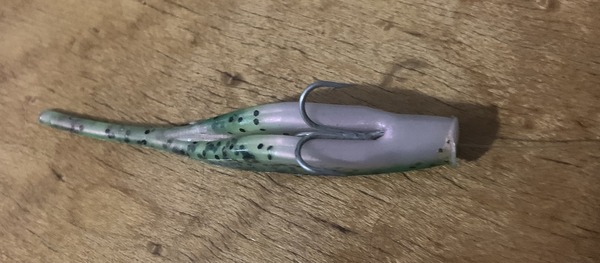
The line-through treble rig is my personal favorite way to fish flukes on spinning gear.
Treble hooks do one thing extremely well. That is hooking the fish.
You don’t need a big hook set or heavy gear to drive the hooks into the bass’ mouth.
The sticky sharp treble hooks have an incredibly high hook up ratio.
Since they are very small and sharp, the lighter spinning gear can still easily hook the bass.
Additionally, the bottom position of the treble hook keeps the fluke sitting in the proper, upright position without flipping around too much.
Waking the fluke and open water twitching are my two favorite ways to fish the fluke when it is rigged up this way.
How to Do It
It takes one or two extra steps, but is well worth it when you are fishing open water.
First, you use a standard worm hook to get the line through the body of the fluke.
Just pretend you are rigging it Texas style, but bring the whole hook through the head of the bait.
Then take that hook off your line and tie it on to a treble hook.
Then slide the treble hook up into the fluke, with the eye poking in the head of the fluke and the top treble sticking into the body of the fluke.
2. Nose Hooked

This may look a bit awkward when you first look at it, but trust me, this rig is no joke.
This is certainly the most simple rigging setup out there. Since most of the hook is out of the fluke and visible, I like to keep my hooks as small as I can get away with as to minimize the visible hardware.
This rigging technique was popularized for smallmouth and spotted bass fishing to increase hook ups with the smaller mouthed bass.
But for that same reason, it works incredible well with spinning rods and reels no matter what bass species you are fishing for.
Out of all rigging methods, baitcasters included, the simple nose hooking rig gets the most action out of the fluke.
Because the hook is only at the very front of the plastic, the entire body of the fluke has the free ability to bend and flow in the water.
Giving the fluke more lifelike and appealing action.
How to Do It
As you can probably guess, the rigging is very simple and easy. Just take a small mosquito or Neko hook and hook it directly through the nose of the fluke.
If you want a more weedless version, you can use a wacky or Neko hook that has weed guard.
These aren’t quite as weedless as the traditional Texas setup, but they do work very well in sparse or thin cover.
3. Drop Shot
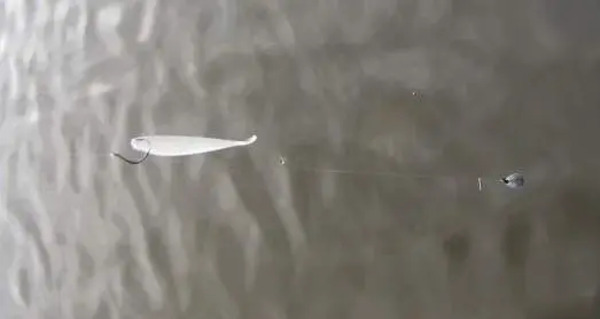
The drop shot is a lot more well known as the other two rigs here, but it is definitely work talking about.
A fluke is one of the best drop shot out there. I use the drop shot setup when bass are holding tighter to the bottom.
The other two setups will usually keep the fluke towards the middle or top of the water column.
But the drop shot allows you to keep the fluke just off the bottom where it would be very difficult to keep a fluke with other rigs.
Baitfish spend the majority of their time down near the bottom darting and milling around.
And a fluke rigged on the drop shot rig perfectly imitates.
The drop shot pairs perfectly with spinning gear as it allows you to use lighter, more finesse hooks and have way more sensitivity then you could on casting gear.
Also Check Out: Core Tackle Scamper Rig Review
How to Do It
The drop shot rig is a bit more complicated, but you’ll get used to it quickly.
Start by tyin a palomar knot to a small mosquito or Neko hook. Make sure you leave the tag end very long, about 8-14 inches.
At the bottom of that tag line, attach your drop shot weight. This can be a small bell sinker, or ideally, an actual drop shot weight.
Then just nose hook the fluke, and you’re all set.
Also Read: 3 Best Soft Plastic Jerkbaits
Reeling this In
Fishing flukes on spinning gear can be incredibly effective when you understand the advantages and the best rigging techniques.
While many anglers default to baitcasting setups for their strength and hook-setting capabilities, spinning equipment offers subtle presentations, increased casting distance, and ease of use, especially for beginners.
The top three rigs—Line-Through Treble Rig, Nose Hooked, and Drop Shot—provide versatile and effective ways to fish flukes with spinning gear, ensuring you can adapt to different fishing conditions and target bass successfully.
By mastering these techniques, you’ll be well-equipped to maximize your success with flukes, leveraging the finesse and precision that spinning setups uniquely offer.



